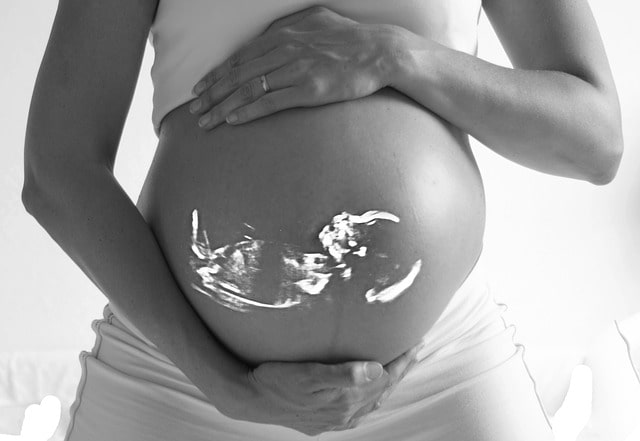 The best way to know about the baby’s position is with the help of ultrasound. In modern times most women would have its multiple times, as it provides much vital information. Ultrasound is safe for use in pregnancy as it uses sound waves for imaging [1].
The best way to know about the baby’s position is with the help of ultrasound. In modern times most women would have its multiple times, as it provides much vital information. Ultrasound is safe for use in pregnancy as it uses sound waves for imaging [1].
Pregnancy causes lots of anxiety, and it helps when women can know a few things in advance. Knowing that the baby is healthy, and head down might help reduce the tension.
It is necessary to understand that during the initial stages of pregnancy, the baby keeps changing position as there is lots of space in the womb.
Therefore, the final position of the baby only becomes evident in the later stages of pregnancy, which is after 35 weeks.
Baby not in the right position is called breech baby in the medical world. And a specialist would diagnose it only in the third trimester. This also means the pregnant ladies should worry about it only after 30 weeks.
What are the right position and its importance?
Head down, or cephalic position is the right position with maximum chances of non-complicated birth. However, studies show that in 3-4% of cases, the baby may not have this position, and may present with legs down.
Legs down presentation is not a disease or pathology, but a non-preferred position due to the higher risks for fetal/child and maternal health [2].
Even when positioned legs down, not all positions are similar. In some cases, it may be buttock first, in another leg, and so on. Certain positions have a higher risk of stillbirth than others [3].
In a child, the head is the most significant part of the body. This means that once the head is out, the rest of the body comes out readily, during natural birth.
However, in the case of feet down, the head might get struck, making natural birth more difficult and increasing the risk of complications.
How can one know the baby’s position without an ultrasound?
To begin with, do not make any conclusions before the 35th week when the baby is still floating around. However, it is necessary to know the position between 35th to 37th week.
Since it is the time when the baby is big enough, it stops changing positions but is still small enough for altering the position through manipulations.
There are only two possible ways for pregnant ladies to guess the position of the baby. One is by looking at the belly shape. In the case of head-down position, the lump will be visible on the lower half of the belly, due to the larger size of the head.
Another way to guess the position is through the movements of the child. Women primarily feel involuntary kicks of the child.
In the case of the head-down position, women would feel movements on the upper side of the belly. The feeling of frequent movements on the lower side may be a cause of some concern.
How one feels the movements of the child would also depend on the direction of the child’s spine, location of the placenta.
Some women may feel and see movements clearly in the upper half of the tummy. However, some might feel movements deep below the ribs. Sometimes the position of the placenta has a dampening effect, and many women may not feel many activities.
In the absence of ultrasound, a well-trained midwife or a doctor can still diagnose the condition with high accuracy with the help of abdominal palpation, pelvic examination, and by listening to the fetal heart.
Although, these ways might help guess the positions of the baby, however, it is highly recommended to have an ultrasound.
Ultrasound not only confirms the location of the baby but also provides other relevant information like the position of the placenta, lack of other abnormalities in the mother [4].
There are ways to correct the baby’s position
Yes, there is nothing like the final diagnosis. If confirmed by ultrasound at the right time, there are still high chances of correcting the position.
Studies show that with the help of manipulations, doctors might successfully change the position of the fetus/child [5].
Here, a word of caution, that internet is full of various recommendations, but the effectiveness of those methods is not known.
It is pointless to use those ways during early pregnancy when the fetus is still floating. Some of the unproven methods might even cause harm.
Since the baby is not firmly fixed at 35 to 37 weeks, there is a chance of correcting its position. A trained specialist can do this by applying gentle pressure from outside, and the method is called the External cephalic version (ECV) – a way of turning the baby in the uterus [6].
This is a multistep procedure. That would require further testing for maternal health; specialist uses ultrasound to visualize while doing it. And a specialist might also give medications to relax the muscles of the uterus. It is a safe and gentle way of correcting the position.
ECV is a standard procedure and quite effective at correcting the position. Studies suggest that complications of such procedures are rare.
Specialists may not use ECV in some cases like in the presence of severe pre-eclampsia, an absolute indication of caesarian section, scarred uterus, multiple pregnancies, to name the few [3].
What to do if the position cannot be corrected?
Many women would still face this situation. In such cases, it is better to seek the consultation of a specialist. There are too many factors to consider before deciding the right way of moving forward.
Non-cephalous presentation, with feet down, is still not a reason to go for the cesarean section, but many women would need it.
Therefore, it is essential to have childbirth in a facility with the possibility of an emergency cesarean section. Studies show that cesarean might be the best option in 50% of such cases [2].
To conclude, head down position is more natural and safer for both mother and child. The best time to understand the final position is between 35th to 37th week of pregnancy.
It is possible to correct the position in many cases with ECV. The feet-down position has a higher risk for fetal and maternal health, but it is not an absolute indicator for the cesarian section.
References
- Guidelines for Diagnostic Imaging During Pregnancy and Lactation. Accessed May 5, 2020. [Link]
- Goffinet F, Carayol M, Foidart J-M, et al. Is planned vaginal delivery for breech presentation at term still an option? Results of an observational prospective survey in France and Belgium. American Journal of Obstetrics and Gynecology. 2006;194(4):1002-1011. doi:10.1016/j.ajog.2005.10.817
- Breech presentation: diagnosis and management | Better Safer Care. Accessed May 5, 2020. [Link]
- Ultrasound: Sonogram. American Pregnancy Association. Published April 26, 2012. Accessed May 5, 2020. [Link]
- Hofmeyr GJ, Kulier R, West HM. External cephalic version for breech presentation at term. Cochrane Database Syst Rev. 2015;2015(4). doi:10.1002/14651858.CD000083.pub3
- breech-baby-patient-information-leaflet.pdf. Accessed May 5, 2020. [Link]




 Dr. Preet Pal SB is a physician (M.D. Medicine) with a specialization in diabetes (Fellowship in diabetes, Royal Liverpool Academy). He has a particular interest in metabolic disorders, considering that they are rising in every corner of the world, more so in India.
Dr. Preet Pal SB is a physician (M.D. Medicine) with a specialization in diabetes (Fellowship in diabetes, Royal Liverpool Academy). He has a particular interest in metabolic disorders, considering that they are rising in every corner of the world, more so in India.